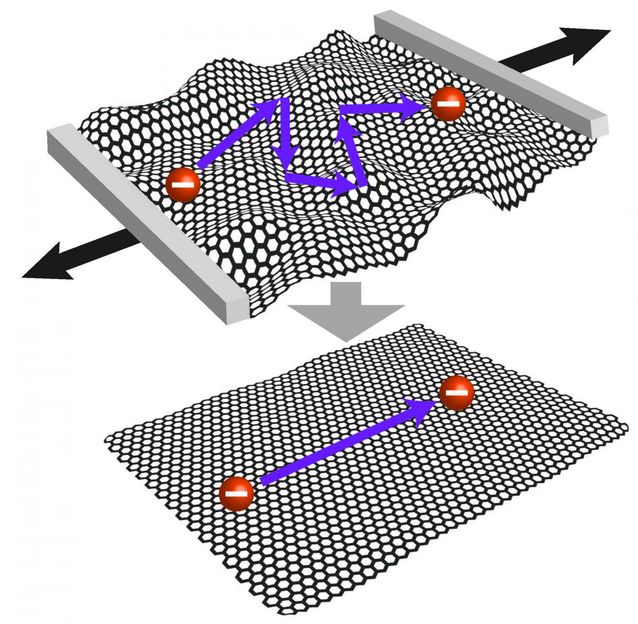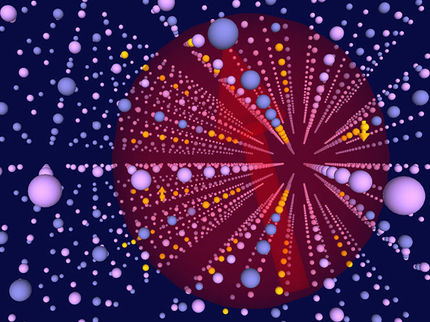Flatter graphene, faster electrons
Advertisement
Bumps on a road slow down our pace, so do corrugations in graphene to travelling electrons. By flattening the corrugations out, we help electrons move effectively faster through a graphene sheet.

Corrugations in graphene slow down the pace of travelling electrons. By pulling on the graphene sheet on two opposite sides, it is flattened and smoothed, and electron transport is improved.
Swiss Nanoscience Institute
Limits because of microscopic distortions
The sample quality of graphene has been improved significantly since its discovery. One factor that limited further improvements has not been investigated directly so far, namely corrugations in the graphene sheet, i.e. microscopic distortions that form even when placed on atomically flat surfaces. Such corrugations can scatter the electrons when moving through an electronic device.
The team of professor Christian Schönenberger of the Swiss Nanoscience Institute and Department of Physics at the University of Basel has developed a technique to pull the graphene sheet on two opposite sides and thereby flattening and smoothing it. "It is similar to pulling on a piece of crumpled paper which irons out wrinkles and folds», says Dr. Lujun Wang, first author of the study. "After this process, the electrons travel effectively faster through the graphene sheet, their "mobility" increases, demonstrating an improved sample quality", his supervisor Dr. Andreas Baumgartner adds.
These findings not only help us to further understand the electron transport in graphene but also provide instructions for studying other two-dimensional materials.
Original publication
Most read news
Original publication
Lujun Wang, Péter Makk, Simon Zihlmann, Andreas Baumgartner, David I. Indolese, Kenji Watanabe, Takashi Taniguchi, and Christian Schönenberger ; "Mobility Enhancement in Graphene by in situ Reduction of Random Strain Fluctuations"; Physics Review Letters.
Organizations
Other news from the department science

Get the chemical industry in your inbox
By submitting this form you agree that LUMITOS AG will send you the newsletter(s) selected above by email. Your data will not be passed on to third parties. Your data will be stored and processed in accordance with our data protection regulations. LUMITOS may contact you by email for the purpose of advertising or market and opinion surveys. You can revoke your consent at any time without giving reasons to LUMITOS AG, Ernst-Augustin-Str. 2, 12489 Berlin, Germany or by e-mail at revoke@lumitos.com with effect for the future. In addition, each email contains a link to unsubscribe from the corresponding newsletter.
































































